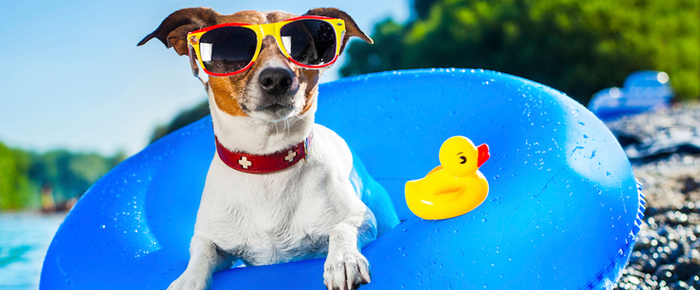
By Janet McAfee
The “dog days” of July continues our extreme desert heat. Last year, the sad story of Summer, a Silky Terrier who died from heat stroke, was all over the local news. Summer sought refuge under an automobile in a Desert Hot Springs car lot, and in the soaring temperature, the site became her coffin.
Other Coachella Valley dogs undoubtedly passed away from this summer’s heat, some left in cars, others left on hot patios, or kept as “outdoor only” dogs in backyards. Their stories did not make the news or grab the attention of hundreds of animal lovers as did Summer’s sad ending. This cannot be said enough – – – BRING YOUR DOG INDOORS DURING THIS HOT WEATHER!
What should you do to protect your pup? Take him on long walks in the early morning and evenings, avoiding outings when the sun is at its highest. Avoid asphalt and concrete when you walk, and stick to shaded areas whenever possible. This is not the time to have him engage in strenuous play at the dog park. Bring a bottle of water to sprinkle on him. Popular flat nosed breeds such as Shih Tzu’s, Pugs, Pekingese, Bulldogs, and Boxers are at greatest risk from the heat, as are puppies and older dogs.
What are the signs of heat stroke? Your dog’s eyes may become glazed, he pants heavily, and he pulls back on the leash. Other symptoms of heat stroke include excessive thirst, hyperventilation, dry gums that are pale or grayish, or bright or dark red tongue or gums. He may quickly suffer weakness, staggering, confusion, vomiting, diarrhea, rectal bleeding, and ultimately collapse. Finally, if the overheating isn’t stopped, his breathing will slow. He may have a seizure or fall into a coma.
GET HIM INTO THE SHADE
Since the intense heat is the source of the problem, get your dog into the shade or indoors as quickly as possible.
APPLY COOL WATER
Apply cool water to his inner thighs and stomach and on the pads of his feet. Use running water from a faucet or hose. Avoid using ice cold water because this could constrict his blood vessels slowing the blood flow and the cooling process. Dr. Lillian Roberts of Country Club Animal Clinic advises, “If you have a swimming pool, it’s okay to get into the pool with your overheated dog as long as they are conscious and/or their head is kept out of the water. Ice cold water should never be used, but most standing pool water is tepid. The main problem is dealing with hypothermia afterwards as their thermostat is fried for quite a while.”
AIR HIM OUT
Allow the water you put on him to evaporate, so don’t cover him with a towel. Keep him near flowing air such as that from a fan or air conditioner.
KEEP YOUR DOG MOVING
Once he starts to cool down, encourage him to stand and walk slowly.
GIVE HIM SMALL AMOUNTS OF COOL, NOT COLD, WATER
If your dog gulps down too much water too fast, vomiting or bloating can result. Again, avoid ice cold water.
GET HIM TO THE VET
Once he starts to cool off, your dog MUST see a vet immediately. He risks getting hypothermia if you continue the cooling off process. Even if he appears fine, there could be underlying organ damage. The effects of heatstroke can continue for 48 to 72 hours.
Our pets rely on us to protect them and keep them comfortable, safe, and healthy. Stay cool, and enjoy the summer with Benji INDOORS.
Jmcafee7@verizon.net









































